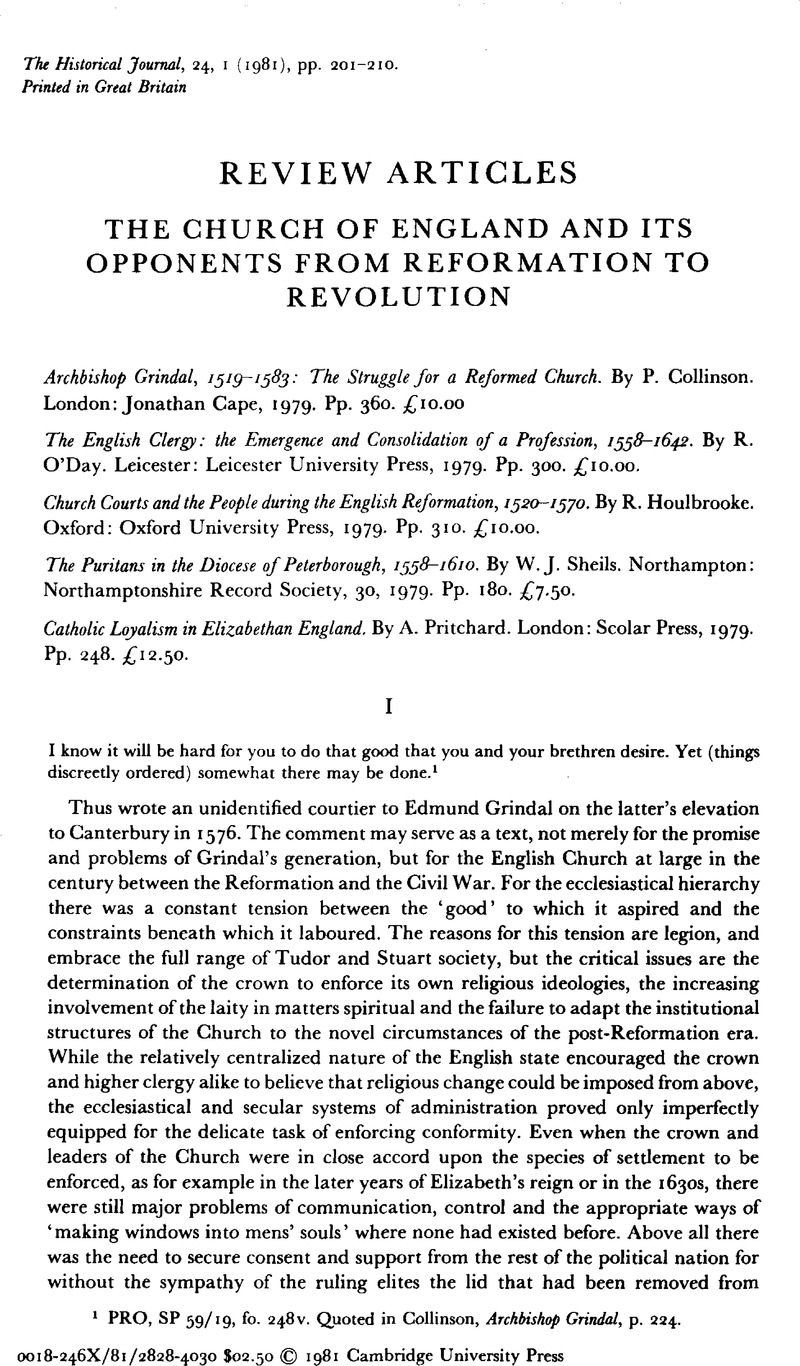Published online by Cambridge University Press: 11 February 2009

1 PRO, SP 59/19, fo. 248V. Quoted in Collinson, Archbishop Grindal, p. 224.
2 For the continuity of a radical tradition in parts of Northamptonshire see C. Hill, The world turned upside down (Penguin edn, 1975), PP. 46–7.
3 Select sixteenth-century causes in tithe from the York diocesan registry, ed. J. S. Purvis (Yorks. Arch. Soc. Record Series), CXIV, 1949.
4 See for example Charlton, K., ‘The professions in sixteenth-century England’, University of Birmingham Historical Journal, XII (1969).Google Scholar
5 D. M. Barratt, ‘Conditions of the parish clergy from the Reformation to 1660 in the dioceses of Oxford, Worcester and Gloucester’, unpub. D.Phil. Oxford Univ. (1950). C. Haigh, Reformation and resistance in Tudor Lancashire (1975).
6 M. Bowker, The secular clergy in the diocese of Lincoln, 1495–1520 (1968). P. Heath, English parish clergy on the eve of the reformation (1969).
7 A. O. Meyer, England and the catholic Church under Queen Elizabeth (revised edn, 1967).J. Bossy, The English catholic community, 1570–1850 (1975). T. H. Clancy, Papist pamphleteers (Chicago, 1964).
8 Elliot Rose, Cases of conscience (1978).
9 N. Tyacke, ‘Puritanism, Arminianism and counter-revolution’ in The origins of the English Civil War, ed. C. Russell (1973).
10 Lake, P., ‘The significance of the Elizabethan identification of the Pope as Anti Christ’, Journal of Ecclesiastical History, XXXI (1980).Google Scholar